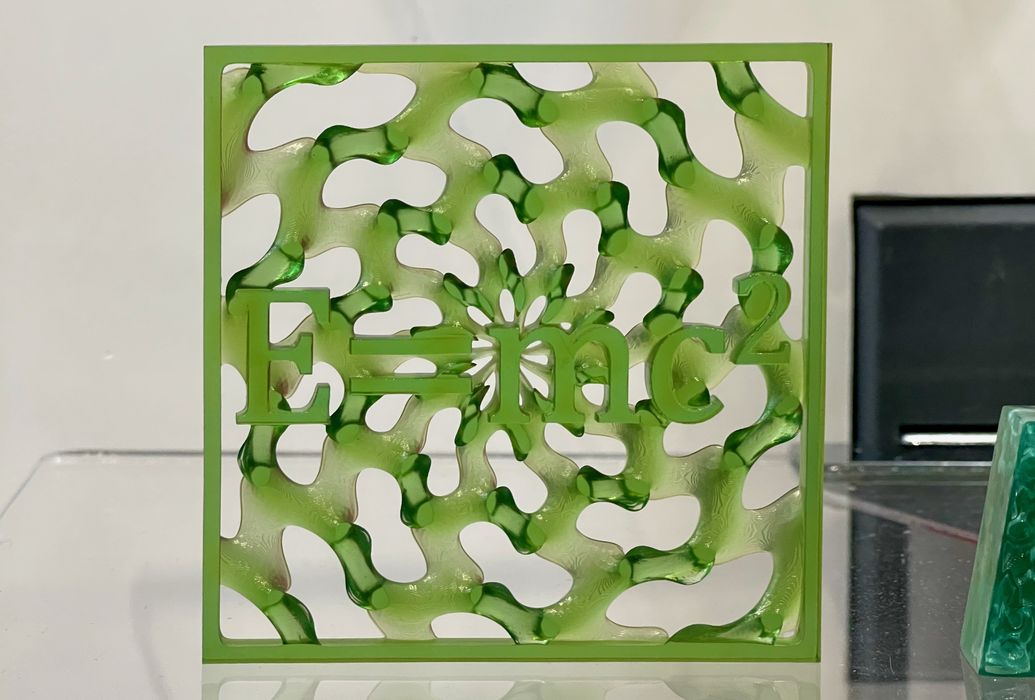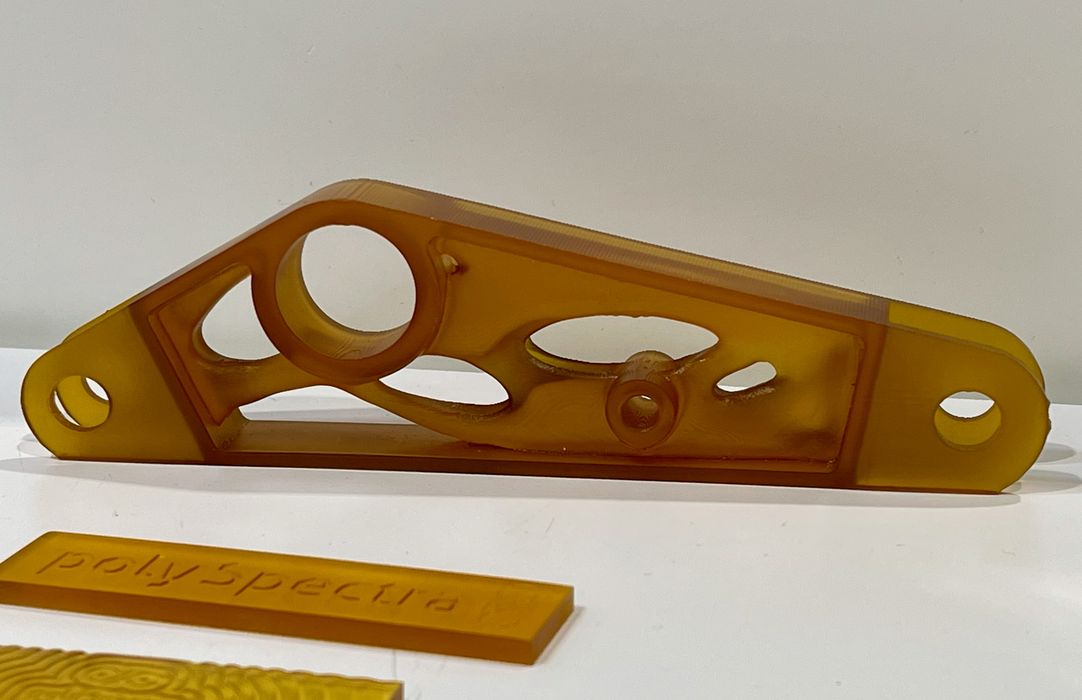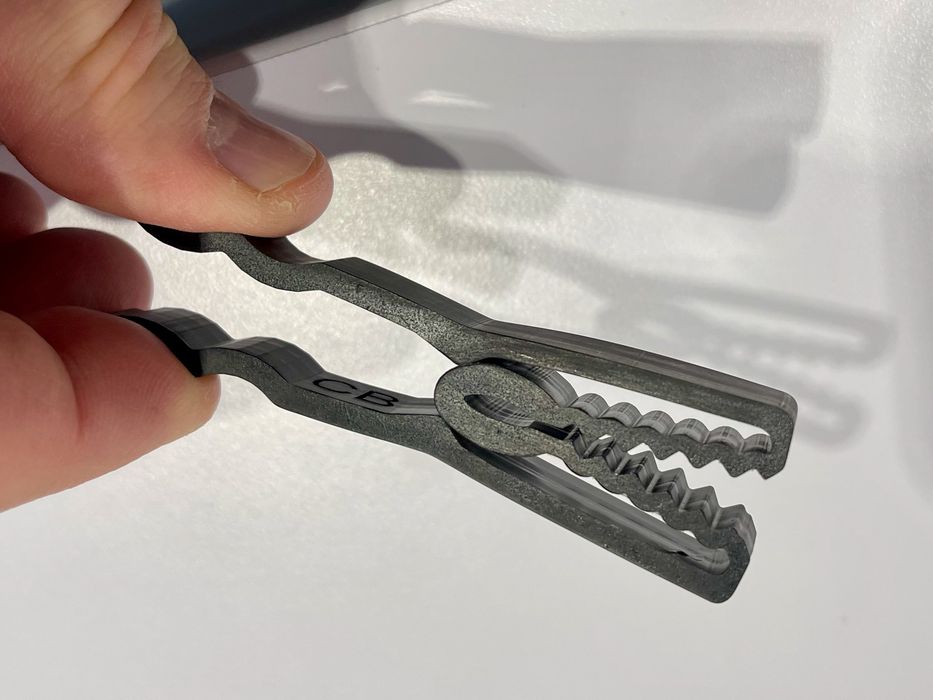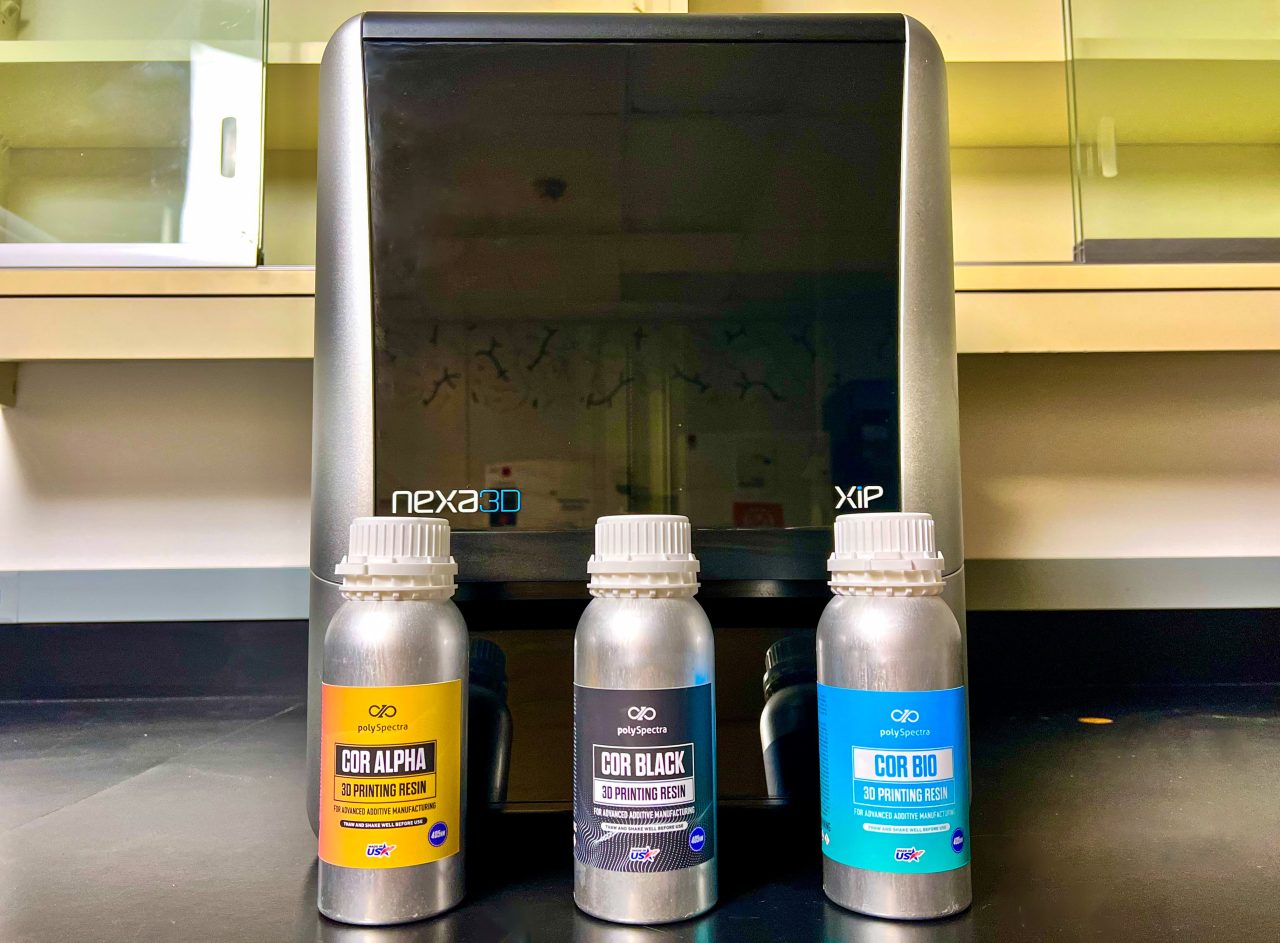
polySpectra offers a unique 3D printer resin chemistry, unlike anything else we’ve seen.
Most 3D printer resins use similar acrylate chemistry to create the photopolymer effect, where UV light solidifies the liquid. This is unsurprising as there are actually only a few base manufacturers of photopolymer resin, and almost all resin products you see are made from their resins.
The problem is that acrylate chemistry usually results in brittle parts. This cuts off many potential applications for resin parts where the brittleness would be detrimental.
Some eight years ago the folks at polySpectra created a new chemistry based on cyclic olefins, which we were told, was “half accident, half invention”. They’ve now commercialized the product with their “COR” line of resins.
These resins offer a range of highly desirable properties for both the parts produced and operational aspects.

The parts are quite strong and are not brittle, unlike parts produced with almost all other resins. They even have developed a unique high temperature elastomer material using this chemistry.
I asked polySpectra representatives about the operational aspects of the resin and was surprised to find that handling it is very different from acrylate resins. For example, it is quite thin, “like water”. Because of this extremely low viscosity, there is no need for an IPA bath after printing. Instead, the resin just drips away automatically, and you can “blow off” any residue.
While that makes the cleaning phase of post processing easier, there is a step that is more difficult. The printed parts are essentially “green”, and must undergo a thermal post-cure step. This is done in a normal microwave oven, using the company’s “waveCure” liquid solution. This material enables heat transfer into the part during microwave exposure, and is said to be 10X faster than simple oven curing.

The resulting parts are not only strong, but also biocompatible.
The company has been working with several companies to certify their resins and develop official print profiles. One they’ve fully validated so far is Asiga’s 385nm equipment. They apparently have also worked with other 385nm equipment manufacturers, and are “exploring 405nm systems”. Currently the company markets a series of 385nm resins on their webstore.

[UPDATE: The company just announced a partnership with Nexa3D to use their advanced resins in that company’s resin systems.]
All of this sounds almost too good to be true, and there has to be a catch. Well, it turns out there is a catch: the pricing. The COR resins are extremely expensive.
The pricing starts at US$299 per 500ml, and one liter bottles are priced at US$549. This is multiple times higher than many proprietary resins that are themselves considered expensive, and almost 20X more expensive than cheap consumer-grade resins.
At that price level there will be fewer customers, but perhaps that makes sense as polySpectra is still a small company with limited production. My hope is that they are able to change the financial equation in the future and open up this amazing material to many more 3D print operations.
Via polySpectra
